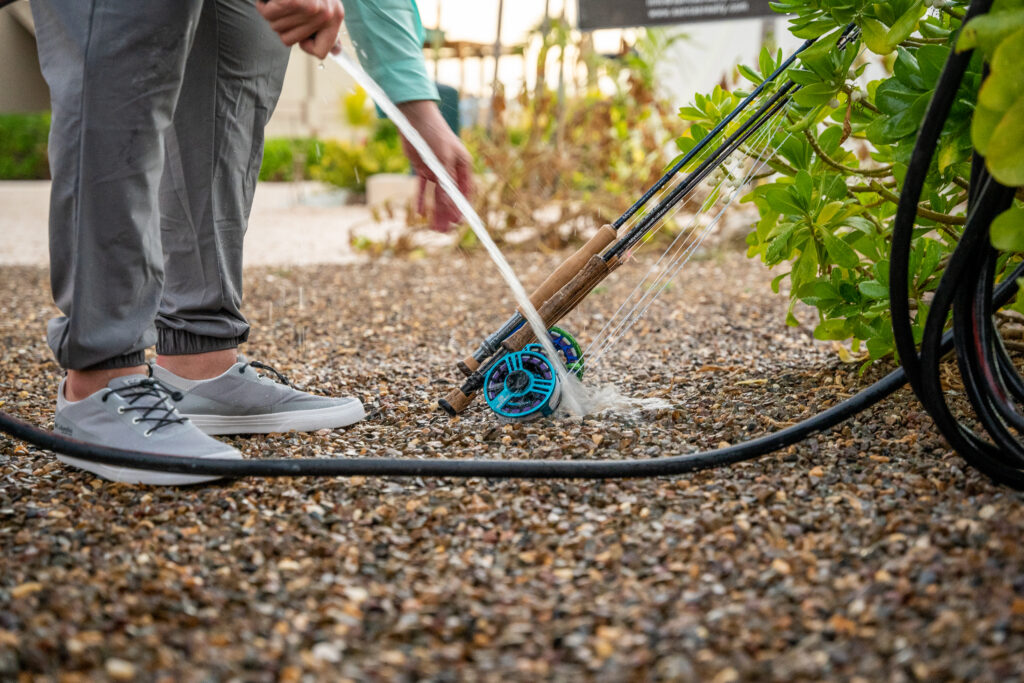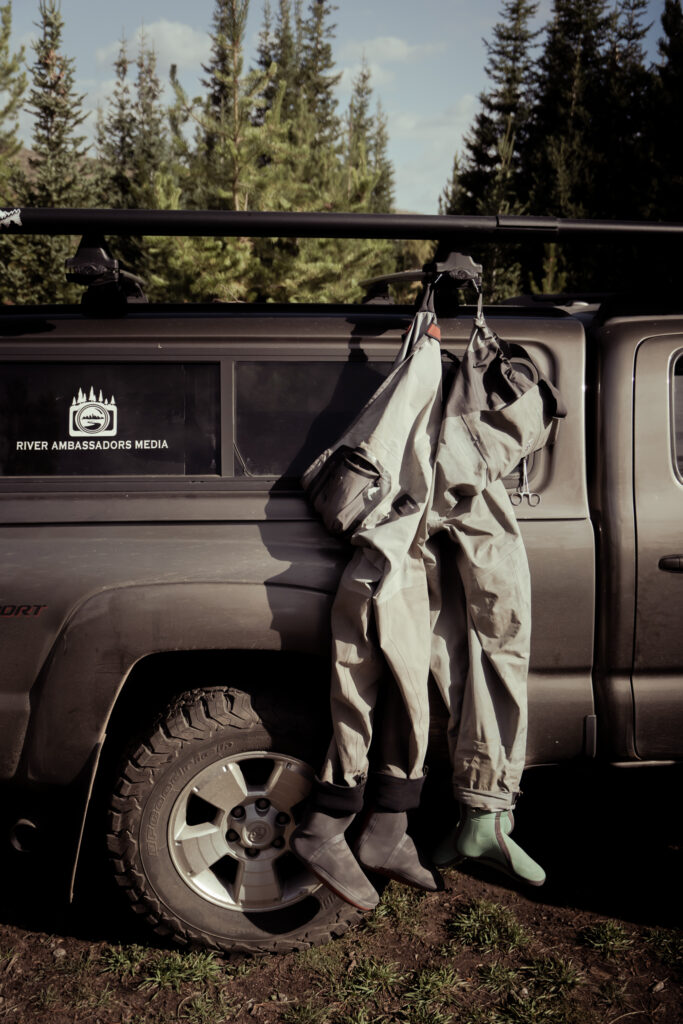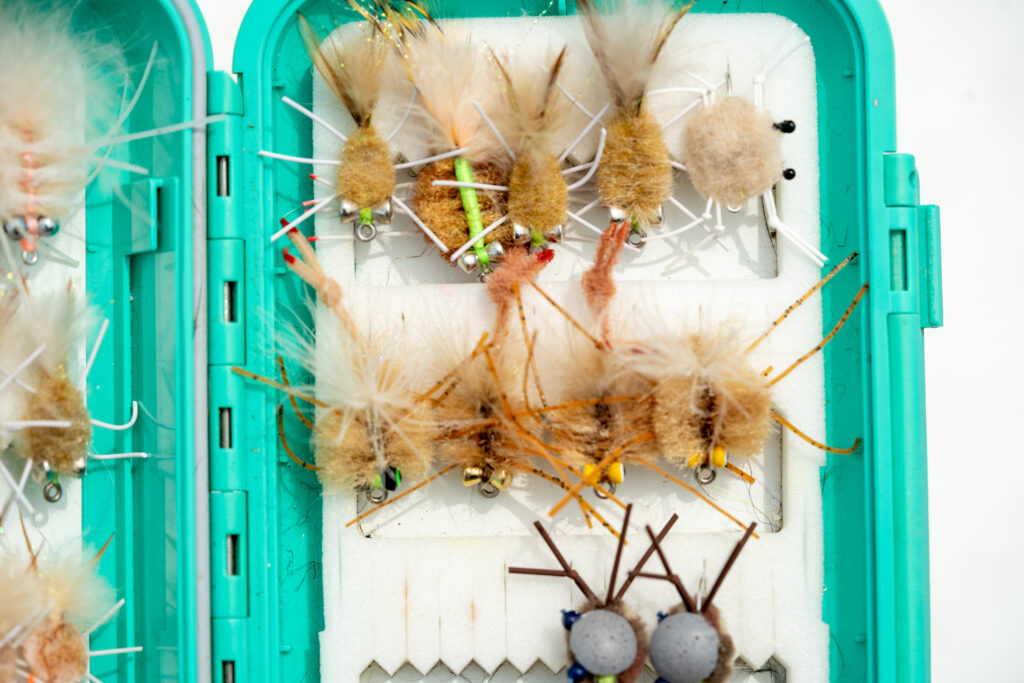Archive for December 2024
How to Care for and Maintain Your Fly Fishing Gear.
Fly fishing is an investment in both time and money, and keeping your gear in top condition is key to ensuring it lasts for many seasons of successful fishing. Whether you’re casting on a quiet stream or tackling a big river, your rods, reels, waders, and other equipment need to be cared for properly to ensure their longevity. Regular maintenance not only helps you avoid costly repairs or replacements but also keeps you out on the water. Here’s how to properly care for and maintain your fly fishing gear so it stays in top shape for years to come.
Clean Your Fly Rod
- After Each Use: Rinse your rod with fresh water to remove any salt, dirt, or debris. Grit and salt can cause corrosion and wear over time, so make it a habit to wash your rod after each fishing trip. This is very important if you fly fish salt water.
- Deep Cleaning: For a deeper clean, use a mild dish soap and warm water solution, along with a soft cloth to wipe down the rod. Pay special attention to the ferrules (the joints where the rod sections connect) as they can accumulate dirt. Dry the rod thoroughly before storing it.
- Inspect Regularly: Look for signs of damage, such as cracks, nicks, or loose guides. If you notice any issues, it’s best to have your rod repaired promptly to avoid further damage. Accidents happen and having a rod break while fighting a fish is not fun.

Reel Care: Keep It Smooth and Functional
- Rinse After Use: Just like your rod, your reel needs to be rinsed with fresh water after each fishing session. This is especially important if you’ve been fishing in saltwater, as salt can quickly corrode the reel’s components.
- Dry Thoroughly: After rinsing, make sure to dry the reel completely. Saltwater or moisture left behind can cause rust and erosion, leading to costly repairs.
- Lubricate the Reel: Periodically, you should apply a small amount of reel lubricant to the moving parts to ensure smooth operation. Avoid over-lubricating, as this can attract dirt and debris.
- Inspect the Drag System: The drag system is the heart of your reel’s performance, so it’s important to check it regularly for smoothness. If the drag feels sticky or uneven, clean and lubricate the internal components or have it serviced by a professional.
Wader Maintenance: Keep Them Leak-Free and Dry
Waders are your protective shield when fishing in cold or deep waters, so ensuring they stay in good shape is vital to your comfort and safety.
- Clean After Every Use: Wash your waders with fresh water after every use to remove mud, sand, debris and invasive species. Avoid using detergents as they damage the waterproofing on your waders. Washing your boots at the same time is incredibly important as it helps stop the spread of invasive species.
- Dry Thoroughly: Always hang your waders to dry after use. Avoid folding them up while they’re still wet, as this can cause moisture to seep into seams and zippers. Hang them upside down by the boots to allow air to flow through the legs and boots.
- Store Properly: Store your waders in a cool, dry place. Avoid leaving them in a hot car or in direct sunlight, as heat can degrade the waterproofing materials over time.

Caring for Your Fly Boxes and Flies
Your fly box keeps your collection of flies organized and accessible, so taking care of it ensures you’ll always be ready for any situation on the water.
- Keep Your Flies Dry: Always make sure your flies are dry before storing them in your fly box. Damp flies can rust your hooks.
- Organize Your Flies: Keeping your flies organized by type, size, or color helps you quickly find the right fly when you need it. This can also prevent unnecessary damage to delicate flies. A good fly box can make all the difference in the world.

Caring for Additional Gear
- Fly Fishing Nets: Clean your fishing net after every use to prevent the buildup of dirt, algae, or fish slime. Wooden nets should be oiled occasionally to prevent cracking. Rubber nets are easier to clean but should still be rinsed and dried thoroughly.
- Clothing and Gear Bags: If you use a fishing vest, jacket, or gear bag, regularly inspect them for wear and tear. Wash them according to the manufacturer’s instructions, and store them in a dry place to prevent mold or mildew from forming.
- Tippet and Leaders: Make sure to replace tippet and leaders that show signs of wear, such as fraying or stretching. Store them in a cool, dry place to prevent them from weakening over time.
Storing Your Gear: Keep Everything Protected
Proper storage of your fly fishing gear is just as important as cleaning it.
- Rods and Reels: Store rods in a rod tube to protect them from damage, and keep reels in a padded case to avoid bumps or scratches. Make sure rods are stored upright or horizontally, avoiding any weight placed on them that could cause bending.
- Waders: Hang waders by the boots, and avoid folding them to prevent creases that could damage the waterproofing. A wader hanger or a dedicated drying rack works well for this.
- General Storage: Keep all your gear in a cool, dry place—away from extreme temperatures or direct sunlight. Avoid storing gear in damp areas, as moisture can damage your equipment over time.
Protect Your Investment for Years of Enjoyment
Fly fishing gear is a significant investment, and properly caring for it will help you get the most out of your equipment. By cleaning, maintaining, and storing your rods, reels, waders, and other gear with care, you’ll ensure that they perform at their best for years to come. A little time spent on maintenance will go a long way in preserving the functionality and longevity of your gear, allowing you to focus on what matters most: enjoying your time on the water.
By taking these steps, you can maximize the lifespan of your gear, reduce the need for replacements, and keep your fishing experience smooth and successful season after season. So, next time you pack up your gear, remember that proper care today means more time spent fishing tomorrow!
